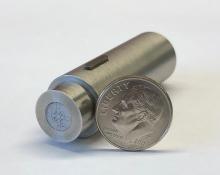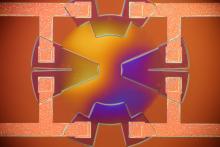IMGers Attend Acoustical Society of America Meeting in Seattle, WA
Submitted by Adam Edstrand on Wed, 06/01/2011 - 9:46amLou Cattafesta and Fei Liu attended the 161st Meeting of the Acoustical Society of America in Seattle, Washington on May 23-27.
Fei presented a talk on Thursday, May 26th, titled Analyzing acoustic response of orifices using transfer matrix method, co-authored by Matias Oyarzun and Lou Cattafesta.
Lou presented a talk on Friday, May 27th, titled An aeroacoustic microelectromechanical systems microphone phased array, co-authored by Adam Edstrand, Chris Bahr, Matt Williams, Jessica Meloy, Tiffany Reagan, Drew Wetzel and Mark Sheplak. In it, Lou described ongoing work at IMG to transition recently-developed MEMS piezoelectric microphones into phased arrays in the UF Aeroacoustic Flow Facility.



